Commentary
Columbia Med School’s Ideological ‘Anti-Bias’ Guidelines
Share:

The Columbia University Vagelos College of Physicians and Surgeons (VP&S) is instructing faculty to adhere to curriculum guidelines that inject ideology into medical education, all in the name of “anti-bias” and inclusivity.
The guidelines, advertised on the VP&S website, are described by the school as a means to “combat systemic racism and bias which decrease our ability to provide equitable medical care, and to increase inclusion within our medical school.”
It’s not clear, exactly, how focusing on combatting “systemic racism” rather than on providing the best possible medical education improves one’s ability to provide medical care.
Regardless, the guidelines, justified on the basis of that premise, feature several principles that appear more concerned with promoting radical ideology than ensuring quality medical education.
These include a conception of gender as distinct from sex, with the statement that an individual identifying as a woman may have a penis.
Gender is rooted in socially constructed roles, behaviors, expressions, and identities of girls, women, boys, men, and gender non-binary people. In fact, the relationship between gender and an individual’s genetic makeup may be overdetermined.
For example, of two people who identify as women, one may carry a Y chromosome while the other does not; one may have a uterus or ovaries or breasts or a penis while the other does not.
Reinforcing this point, VP&S asks its faculty to refrain from using the term “women” in certain situations.
Us[e] precise gender-related language, e.g., “people with uteruses” instead of “women” if the relevant point is about the presence of a uterus rather than the person’s expressed gender identity.
Moreover, the guidelines instruct faculty to attribute differences in health outcomes between racial groups to factors such as “structural racism.”
Conversations that focus on the structural reasons for health outcomes (e.g. racism, education, housing, immigration status) may help students move from the misguided notion that genetic/biological differences between “races” drive such health disparities to developing a more nuanced understanding of how structural racism, socioeconomic status, unconscious bias, and other factors impact health care.
Dismissing wholesale the role of biological differences in health outcomes is misleading and harmful.
For instance, as Do No Harm’s Director of Research Ian Kingsbury notes using the example of preeclampsia, in which about 55 percent of risk is estimated to be genetic, “West African ancestry is linked to risk variants in a gene called alipoprotein L1 (APOL1) that dramatically increase the likelihood of developing preeclampsia or kidney disease.”
Unfortunately, the VP&S guidelines appear to simply be one of the more visible manifestations of the school’s commitment to woke ideology.
According to a document hosted on the VP&S website dated from October 2024, the medical school is advertising a number of student research opportunities – many of which include substantial funding – that are targeted at “underrepresented” students.
The vast majority of these programs are offered externally, and VP&S appears to be promoting them rather than administering them.
These include the since-rebranded American Society of Hematology (ASH) Minority Medical Student Award Program, which was the subject of a Do No Harm civil rights complaint. The program, which was part of ASH’s Minority Recruitment Initiative, was restricted to “Indigenous American Indians or Alaska Natives, Blacks or African Americans, Hispanics or Latinos, Native Hawaiians or other Pacific Islanders, African Canadians, Inuit, and First Nation Peoples.”
Now, however, the program has become part of ASH’s Hematology Inclusion Pathway (HIP) Initiative, which still aims to advance DEI.
As ASH recently described it, “t]he new HIP Initiative better aligns with ASH’s commitment to diversity, equity, and inclusion and reflects an evolving understanding of the communities that are underrepresented in hematology.” That language has since been removed from the HIP website.
Other programs are less explicit, but nonetheless invoke language commonly used to refer to programs targeted toward racial minorities.
For instance, per the description of the Medical Student Summer Research Fellowship in Psychiatry at Columbia University, the fellowship “aims to expose students who belong to historically underrepresented groups to the breadth of career opportunities in psychiatry.”
The program’s eligibility criteria note that individuals will receive special consideration if they have, “either as a result of their socio-economic background, their status as a member of an historically underrepresented group in medical school, their disability status, their LGBTQ status, or other challenging life experiences, overcome obstacles on their journey to medical school.”
VP&S should focus on providing the medical education necessary to train the next generation of competent physicians – not force radical politics into the school curriculum.


